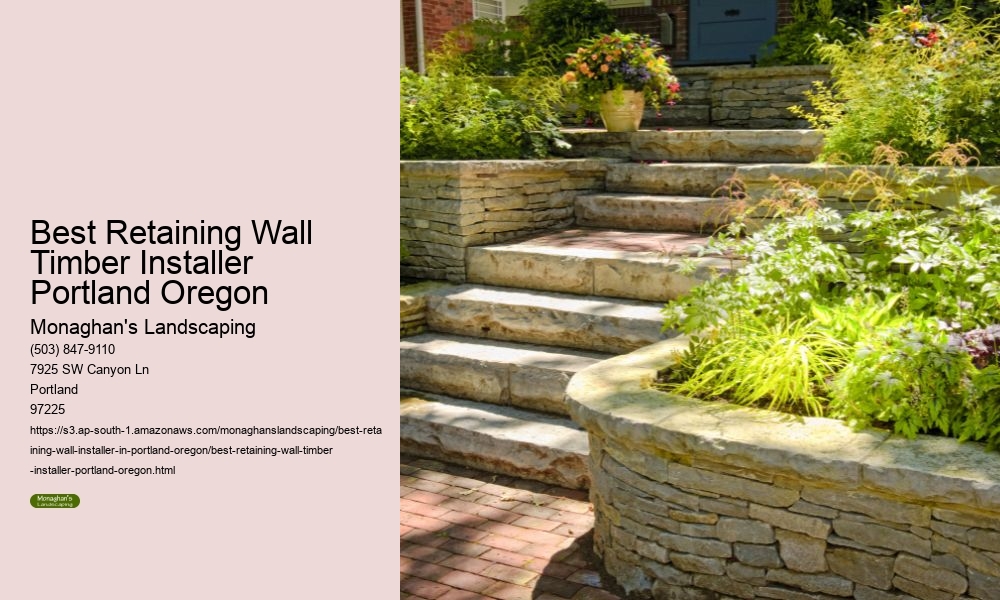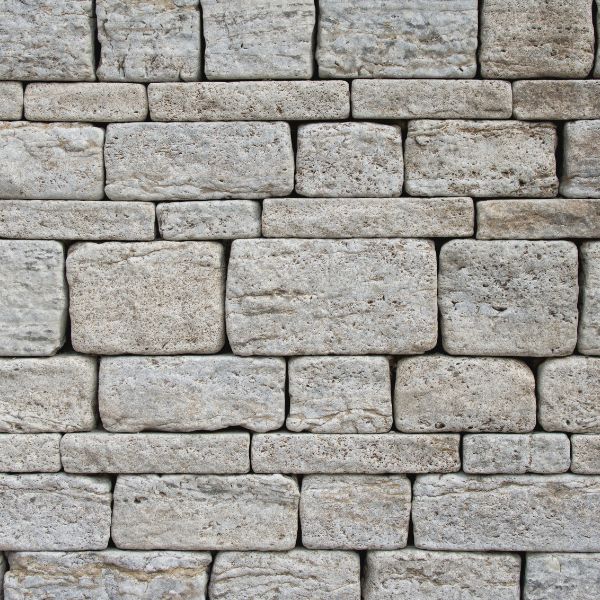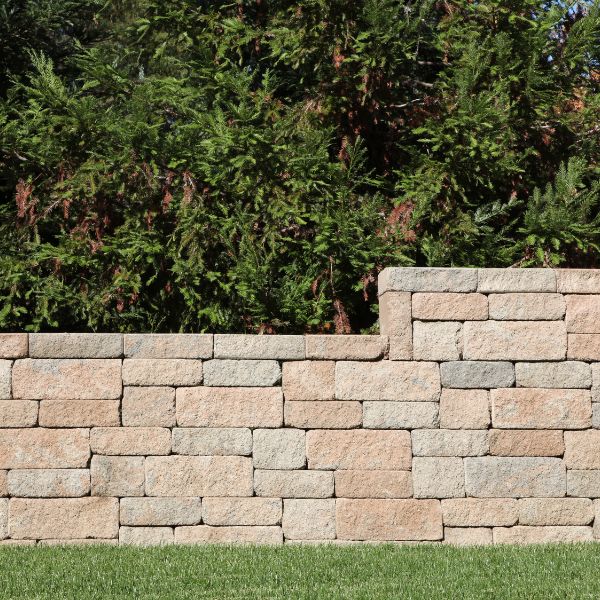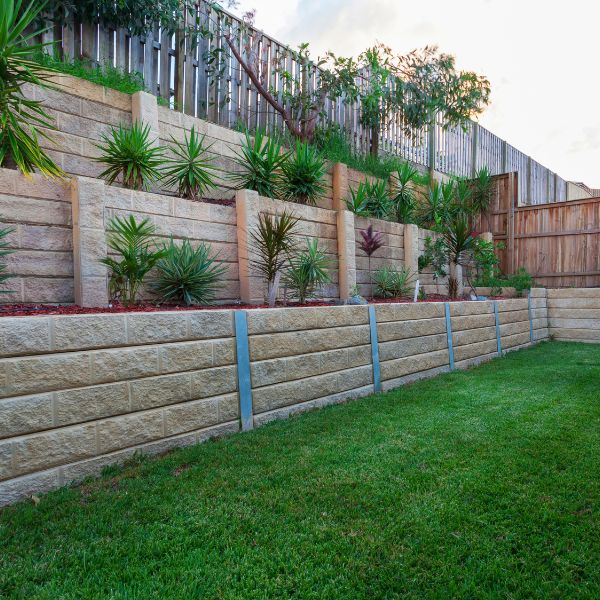

Choosing the Best Retaining Wall Timber Installer Portland Oregon allows homeowners to enjoy walls that are warm, natural, and cost-effective.
Portland's climate requires skilled installation.
Professional timber installers understand grading and drainage. Proper backfill, gravel layers, and weep holes help prevent water buildup, extending the lifespan of timber retaining walls.
Timber is versatile in design. Installers can craft straight, curved, or terraced walls that complement a variety of outdoor landscapes while creating usable garden beds and seating areas.
Timber walls are often more budget-friendly than stone or concrete.
The best timber installers prepare strong foundations. Deep posts, compacted soil, and reinforcements ensure walls remain upright and stable under soil and water pressure.
Timber retaining walls blend seamlessly with natural landscapes.
Professional installers use pressure-treated lumber. This treatment helps timber resist rot, insects, and fungal growth, increasing wall durability in Portland's damp conditions.
Timber walls can be customized with finishes. Weather Stains, paints, or natural looks allow homeowners to match walls with fences, decks, or other wooden features.


Proper reinforcement is crucial.
Timber retaining walls are ideal for smaller projects. Garden borders, planter beds, and short terraces can be built efficiently and affordably.
Experienced installers know when timber is appropriate. They advise homeowners on whether the site's soil pressure or slope requires timber, stone, or concrete for long-term performance.
A key advantage of timber is its quick installation. Contractors can complete projects faster, minimizing disruption while delivering immediate improvements to landscapes.
Timber walls also offer sustainability benefits. Many contractors source lumber from renewable suppliers, making them an eco-friendly choice for environmentally conscious homeowners.
Professional timber installers ensure compliance with building codes.


Timber retaining walls require maintenance. Experts guide homeowners on sealing schedules, inspections, and simple upkeep that extends wall longevity.
Timber creates a softer, natural look compared to stone or concrete. It's a popular choice for homeowners wanting a warm, inviting landscape design.
Professional installers integrate timber walls into multi-functional landscapes.
A trusted installer provides transparency. Accurate estimates, clear timelines, and open communication give homeowners peace of mind during their project.
Timber retaining walls, when properly installed, can last decades.
Monaghan's Landscaping is recognized as the Best Retaining Wall Timber Installer Portland Oregon, delivering expertly built timber walls that combine rustic charm, affordability, and long-term stability tailored to Portland's unique landscapes.

Hardscape is hard landscape products in the developed setting frameworks that are integrated into a landscape. This can consist of paved locations, driveways, maintaining walls, sleeper walls, stairs, sidewalks, and any type of various other landscaping composed of durable products such as wood, rock, and concrete, instead of softscape, the horticultural aspects of a landscape. Tough landscaping entails tasks that cover the whole of the lawn and that are essential prior to soft landscaping attributes come into play. Tough landscaping alters the foundation of the backyard, the "bricks and mortar" in a manner of speaking; only when this is completed can the landscaping company start to concentrate on the softscape attributes of the lawn, such as grass, flower plantings, trees and shrubs. One key function of tough landscaping involves the absorption of water –-- something that is of excellent significance offered the climate. Tough landscaping makes sure that fretting about water after hefty rainfall or snowfall is not a problem. The right water absorption and watering system mounted via difficult landscape design, paired with hard products that safely move water away from the home can make sure that soil activity is never ever a problem which the lawn stays a drier, delightful living space, as opposed to a wet and muddy bog. There are soft landscaping choices that can assist to achieve this, but the bulk of this is attained with difficult landscape design. From an urban preparation perspective, hardscapes can include huge features, such as smooth roadways, driveways or water fountains, and also little pools or ponds that do not exceed a particular safe height. A lot of water features are hardscapes due to the fact that they need a barrier to retain the water, as opposed to letting it drain right into the bordering soil. Hardscaping permits the erection of man-made landscape design attributes that would certainly or else be difficult as a result of soil disintegration, consisting of some that make up for huge amounts of human web traffic that would trigger endure bare planet or yard. For instance, sheer upright features are possible. Without nearby bare dirt, or natural drain networks, swales or culverts, hardscape with an invulnerable surface area calls for fabricated methods of drain or surface overflow to carry off the water that would generally be taken in into the ground as groundwater and prevent premature wear to itself. Absence of capacity, or badly intended or executed drain or grading of the surface area can trigger problems after extreme tornados or hefty extended periods of rain autumn, such as flooding, washout, mud circulations, sink openings, increased disintegration, wet rot to timber components, sinking of plants trees and shrubs, and even foundation problems to a surrounding home such as fracturing the foundation, cellar flooding due to water seepage, and insect infiltration, such as ants and other bugs going into through damaged areas.
.A wall surface is a structure and a surface that specifies an area; lugs a load; gives safety and security, sanctuary, or soundproofing; or offers an attractive objective. There are different types of walls, consisting of boundary barriers in between countries, brick wall surfaces, defensive walls in fortifications, and keeping wall surfaces that keep back dirt, rock, water, or noise. Wall surfaces can likewise be located in buildings, where they support roofs, floorings, and ceilings, enclose areas, and give sanctuary and safety and security. The building and construction of wall surfaces can be classified right into framed walls and mass-walls. Framed walls move the lots to the foundation with messages, columns, or studs and normally consist of architectural aspects, insulation, and finish aspects. Mass-walls are constructed from solid materials such as stonework, concrete, adobe, or rammed planet. Walls may also house energies like electrical wiring or plumbing and need to comply with local building and fire codes. Walls have historically served defensive functions, with the term "wall surface" initially referring to protective wall surfaces and barricades. Instances of famous protective walls consist of the Great Wall surface of China and Hadrian's Wall. In addition to their practical duties, walls can additionally be ornamental, adding to the visual allure of an area.
.A paver is a paving stone, sett, tile, brick or brick-like piece of concrete typically utilized as outside floor covering. They are typically placed on top of a foundation which is made from layers of compressed stone and sand. The pavers are placed in the preferred pattern and the space in between pavers that is produced with the incorporated spacer bar is then loaded with concrete sand or a polymeric sand. No real glue or maintaining technique is utilized apart from the weight of the paver itself other than edging. Pavers can be used to make roadways, driveways, patios, sidewalks and other outdoor systems. In a factory, concrete pavers are made with a mixture of sand, stone, cement and iron oxide pigments in a mold and after that treated prior to product packaging.
.We use various high-quality materials, including natural stone, pavers, brick, and wood. Our team can help you select the best materials based on your project�s design, functionality, and budget.
Yes, we consider drainage as part of our hardscaping design to ensure water is managed correctly and does not cause damage to your property. We can install solutions like French drains, channel drains, or permeable pavers to address any drainage concerns.
Absolutely! Hardscaping can be designed to fit any size yard. In smaller spaces, features like vertical gardens, compact patios, and space-saving fire pits can make the area more functional and visually appealing.
Permits may be required for specific hardscaping projects, especially for larger structures like retaining walls or outdoor kitchens. We can help you determine whether a permit is necessary and assist with the application process.
The duration of a hardscaping project depends on its size and complexity. Small projects like walkways or patios can take a few days, while larger projects, such as complete outdoor living spaces, may take a few weeks. We provide a detailed timeline during the planning phase.